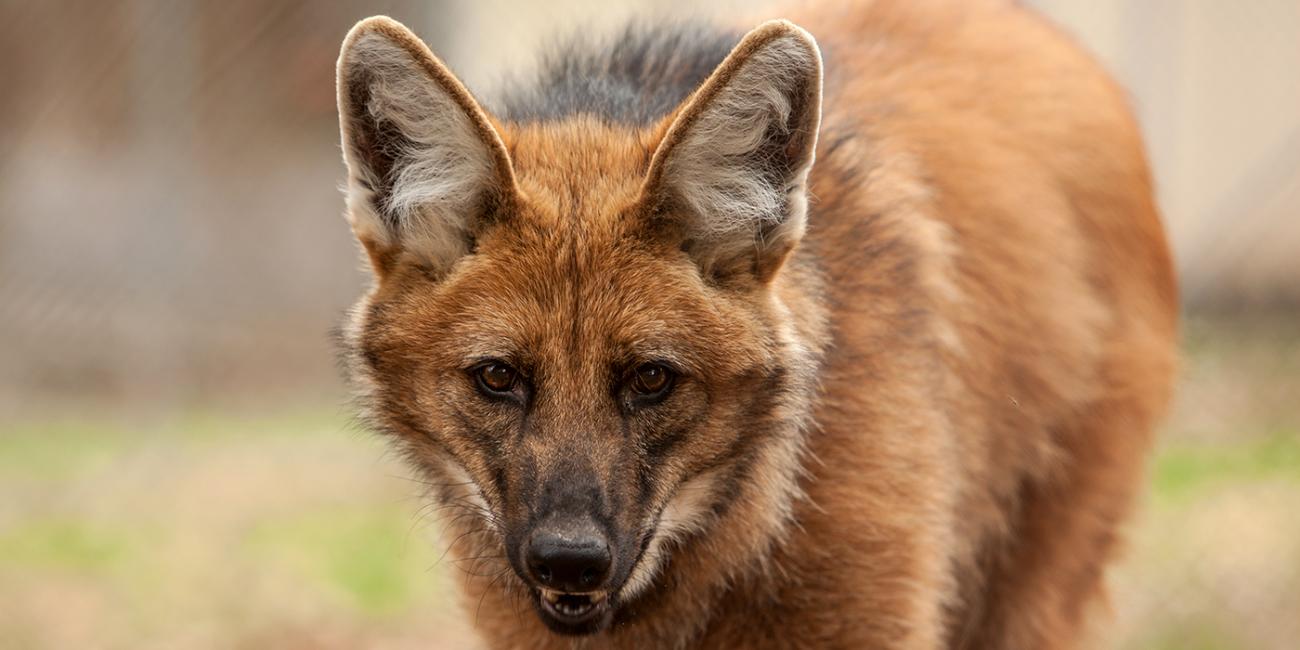Chemical Communication About Reproduction in the Maned Wolf
Scientists at the Smithsonian Conservation Biology Institute’s Center for Species Survival (CSS) are investigating chemical communication in the maned wolf (Chrysocyon brachyurus), a threatened canid species native to South America, with hopes of developing a non-invasive method of manipulating the female maned wolf reproductive cycle. This could one day lead to enhanced breeding success and improved genetic population management.
The maned wolf is a unique canid found mainly in Brazil but also across parts of Argentina, Bolivia, Paraguay and Peru. The species is threatened by habitat loss due to agricultural development. Unlike other large canid species, the maned wolf is monogamous but solitary, with mates defending a shared territory but interacting infrequently. Female maned wolves are receptive to mating for only one to 10 days out of the year. Considering the short period of receptivity and the large size of the maned wolf’s home range (up to 80 km2), long-range communication about reproduction is especially important for this species.
Recent SCBI studies indicate that maned wolves are induced ovulators, with females ovulating only in the presence of a male. Research suggests that ovulation is regulated by olfactory signals rather than by visual stimuli or by physical contact. Specifically, females who were housed adjacent to a male with no direct physical contact but access to his scent marks ovulated, while females housed diagonally from a male with only visual contact (no ability to investigate scent marks) failed to ovulate. Additionally, previous studies have shown that as breeding season approaches, maned wolves scent mark more frequently, suggesting the presence of signal compounds in urine rather than in feces or glandular secretions.
CSS scientist Nucharin Songsasen and a team of professors at George Mason University work to advance the understanding of the basic reproductive biology of the maned wolf and strengthen research in the growing field of mammalian chemosignals (pheromones). Using a multidisciplinary approach, researchers assess levels of volatile secretion in urine via analytical chemistry. These studies are then coupled with the assessments of behavioral and reproductive hormone responses of female maned wolves to compounds in male urine.
Specifically, the team seeks to understand the effect of urinary signaling compounds on ovarian activity. The central hypothesis is that individuals excrete semiochemicals in their urine leading up to breeding season that result in endocrine and physiological changes in their mate. It is possible that males excrete urinary semiochemicals at the onset of breeding season, prompting ovarian follicle development and ultimately ovulation in the female. Research methods include: 1) performing gas chromatography-mass spectrometry analyses investigating volatile constituents of male urine samples in search of putative semiochemicals, and (2) determining the biological role of isolated compounds via bioassays assessing female wolves’ behavioral, hormonal and physiological responses to exposure. This work is done in collaboration with the George Mason University Shared Research Instrumentation Facility (SRIF).
Studies at SRIF are exploring volatile chemical constituents in maned wolf urine using GC-MS, specifically searching for compounds that differ between males and females, compounds that differ seasonally, and compounds that differ with reproductive status. Once isolated, researchers will use these compounds in bioassays to determine their role in reproduction.













